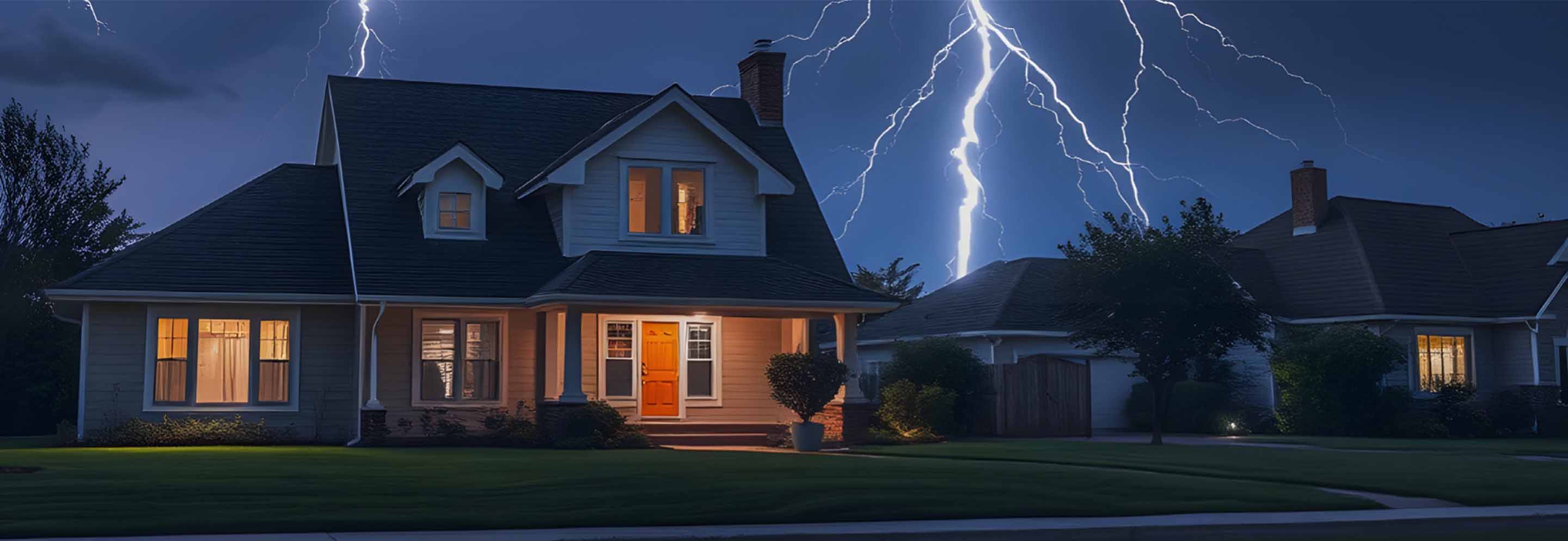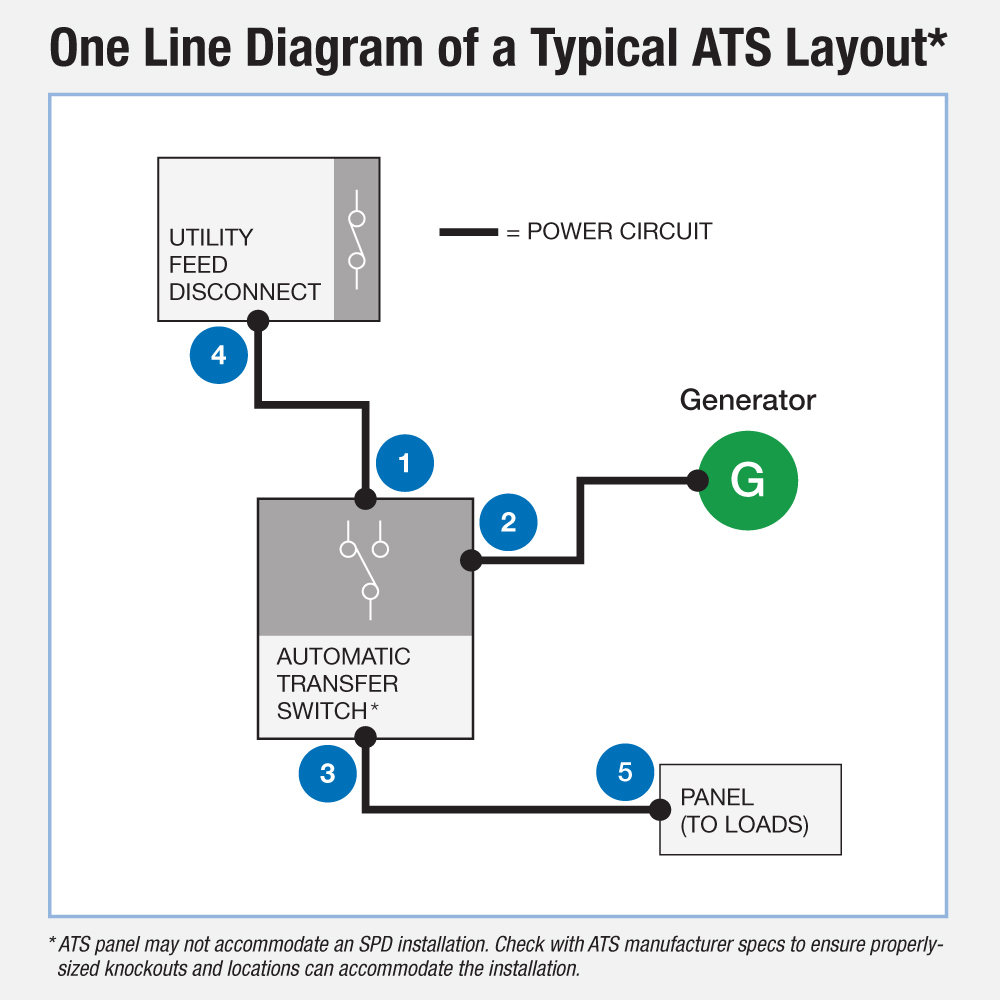
Activating a backup generator when a primary power source fails isn’t as simple as flipping a switch. It requires a critical component, known as an automatic transfer switch (ATS), to monitor changes in power distribution and spring into action when an emergency strikes.
Although this process typically happens in a matter of seconds, it involves countless variables as the load switches from the utility grid power source to the generator and then back again. To help keep backup generators in good working order, it’s crucial to install surge protective devices at multiple points throughout a home. This protects the sensitive electronics within an ATS from damage caused by voltage instability, transients during load switching, lightning, and other power surge issues.
Read More: Surge Protection for Automatic Transfer Switches (White Paper)
Here’s a look at five key locations to install a hardwired surge protective device (SPD) to support the long-term performance of your backup generator investment:
1. Utility Feed to the ATS
Installing surge protection at the utility feed to the ATS can prevent surge damage from upstream sources, such as lightning and switching surges created by the utility system operation. Electronic circuitry is often included on the utility side of an ATS, and these circuits require protection to ensure proper operation.
- Recommendation: Install an outdoor-rated Type 1 SPD, such as the IG1240RC3 or IG1320RC3.

2. Generator Input to the ATS
It’s critical to protect the backup generator input to the ATS. This is especially true when the distance between the generator and the ATS exceeds 30 feet or when there is external/exposed wiring. In these cases, the ATS is susceptible to damage from lightning strikes to the wiring between the ATS and the generator, as well as nearby lightning strikes to the ground/structures near the wiring run. Switching transients can also be common between the generator and ATS in this location, making surge protection essential.
- Recommendation: Install an outdoor-rated Type 1 SPD, such as the IG1240RC3 or IG1320RC3.
3. At the ATS Output
The wiring on an ATS’s output is often routed outdoors and can be exposed to nearby lightning strikes through the ground or nearby structures, so we highly recommend installing a robust SPD at this location. Surge protection is also important here due to the presence of switching transients that can propagate between the ATS and the loads connected to its output.
- Recommendation: Install an outdoor-rated Type 1 SPD, such as the IG1240RC3 or IG1320RC3.
4. Utility Feed Disconnect
Protecting the utility disconnect feed with an SPD (when a disconnect is present) helps safeguard the ATS and adds another layer of surge protection to the system. With this approach, the SPD on the utility feed disconnect absorbs the largest portion of the incoming power surge, thereby limiting the exposure to the SPD and protecting the ATS utility input. As a result, the ATS takes a smaller voltage hit, lessening the chance of failure or disruption to the larger system.
- Recommendation: Install an outdoor-rated Type 1 SPD, such as the PANELGUARD L10 Series, IG1240RC3, or IG1320RC3.
5. ATS Feed to Main Entrance to Breaker Panel
Lastly, installing an SPD at the main electrical panel is critical for protecting downstream loads in a building or residence. Although this location is technically outside of the backup generator system, it’s still important to account for it. Protection at this location is even more essential when the distance between the ATS and the loads exceeds 30 feet or has external wiring, as lines may be exposed to nearby lightning events.
- Recommendation: Install an outdoor-rated Type 1 or Type 2 SPD, such as the IG2240-IMSK, IG2240-PK, or IG1240RC3.
Ready to make surge protection a focus in your next commercial or residential project? Contact your local Intermatic representative today to get started.




